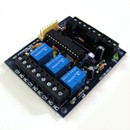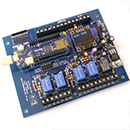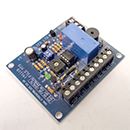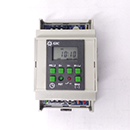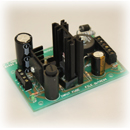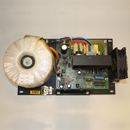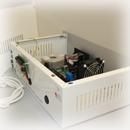 Hardware and Accessories
Hardware and Accessories
 Special Offers
Special Offers
 KT Manufacturing
KT Manufacturing
 Aerials and Antennae
Aerials and Antennae
 Clearance Sale
Clearance Sale

Hardware and Accessories -> Timers

Tri-input / output timer with on board configurable behaviour. Possible configurations include I/O repeat, invert repeat, delayed repeat, inverse delayed repeat (with times configurable via jumper settings) timed latching and non-latching variants. The unit is able to switch up to 1amp DC and custom software is available on request, simply contact us with requirements. Compatible with ATMega8, ATMega88, ATMega168 and ATMega328 microcontrollers.

Ideal for projects such as lighting control, garden monitoring, home automation and more the MT4 breakout board provides an interface for analogue or switched input and switched output between MKR footprint Arduino boards and third party hardware. The MT4 also has an interface for OLED displays which use the I2c bus, and socketed connections for SD card interfaces using SPI. Many libraries already exist for Arduino boards which support this hardware, so user designed configurations can quickly and easily be realised.Inputs to the Arduino MKR, be it the Zero, 1400 GSM, WAN or other variants with the same connection footprint, can be configured to use the screw terminals as digital inputs by applying the corresponding jumpers on the CONFIG INPUTS header, or as analogue inputs when connected directly to the header pins. Configuration jumpers connect a pull-up resistor making digital inputs normally high, so that a low signal will activate them. See the PDF Spec sheet for more detailed information

Single input, single output multi-timer with normally open and normally closed clean contacts which can switch up to 5A DC. Time is variable via preset configuration, and an isolating sounder indicates alarm state. Compatible with Atmel ATTiny45 and ATTiny85 microcontrollers, with custom software available on request.

Programmable 7 day, 24 hour clock timer, fully compatible replacement for BPT TT/2. Features automatic daylight savings adjustment and 1000 hours battery backup.

The DIG1 is a 12-27.2 Volt universal timer module that will perform the following tasks.
¤ Energise on start and then drop out after the selected time has expired.
¤ Energise on start and then drop out after timed out then repeat cycle.
¤ Delayed on start for a set time and then energises, after the time set has expired the relay will de-energise, the timer will then repeat the cycle until the input start is restored.
¤ Delayed on start, and then the relay energises and stays activated until input start is restored
